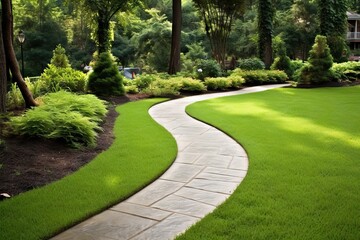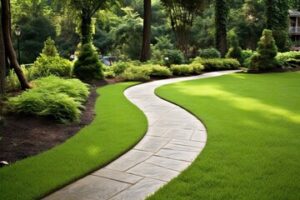Link juice is the value or authority that one webpage passes to another through a hyperlink. It is a key factor in search engine rankings.
The amount of link juice a page passes is determined by many factors. Some of these include relevance, anchor text, and authority. Other factors include a logical internal linking structure and the fixing of broken links. Visit https://www.highpointdigitalmedia.com/ to learn more.
A page’s link juice depends on the relevance of the pages it links to. For example, a link from a highly relevant page, such as a popular news outlet or an educational institution, will carry more weight than a random page from a different website. The relevance of a page also depends on the keyword in its anchor text. Ideally, the anchor text should be relevant to the linked page’s content but should not be over optimised. Using 3rd party tools like Ahrefs to measure these factors will help you craft a more effective SEO strategy.
The authority of the linking page is another factor that influences link juice. High-authority websites are more likely to pass link equity than low-authority sites. In addition, the link-building strategies employed by a site can influence its level of authority.
In addition to the authority of the linking page, the relevance and context of the linked page also determines its amount of link juice. For example, a link to a page about car repair is more likely to pass link juice than a page about baking. This is because both pages are about cars, but one is more relevant to the search intent of users searching for information about car repair.
Another important factor that affects link juice is whether a link is dofollow or nofollow. Dofollow links pass link juice, which can help improve a page’s authority and search engine ranking. Nofollow links do not pass link juice, and they may negatively impact a page’s SERP rankings.
Lastly, the location of a link on a webpage can also impact its amount of link juice. For example, placing links to relevant pages at the top of a webpage can boost those pages’ visibility in search engines. In addition, linking to outbound pages from contextually relevant internal pages can increase their visibility in search engines.
Link Juice is a powerful SEO tool that can transform your online visibility. Strategically managing these factors, often with the help of professional SEO services, can help you rank higher and expand your online reach.
Anchor Text
Link Juice is the amount of authority and trust that passes from one webpage to another through hyperlinks. It is a critical SEO factor that significantly influences your site’s rankings in search engine results. The higher the quality of your links, the more link juice you will receive. You can optimize your link juice by using strategies like nofollow tags, improving internal linking structures, and acquiring quality backlinks from reputable sources.
The anchor text used in a hyperlink can influence how much link juice is passed. It should be descriptive and accurately reflect the linked-to page’s content. This will help search engines understand the context of the linked-to page and pass more link juice. Avoid keyword-stuffed anchor texts, as they can negatively affect your ranking.
Other factors that influence link juice include the relevance of the linked-to page and the location of the link on a webpage. For example, a link that appears in the footer of a website will pass less link equity than a link that is located within the body of a blog post. Additionally, if a link is nofollow, it will not pass any link equity to the page it leads to.
It’s also important to keep in mind that a 404 error can stop the flow of link juice, so it’s important to remove any broken links from your website. You can use an online tool like Moz or Ahrefs to check for broken links and perform 301 redirects where necessary.
In order to improve your search engine optimization, you need to focus on obtaining high-quality backlinks from reputable websites in your niche. This can be done by building relationships with other site owners and bloggers, participating in online communities, or submitting guest posts. You should also focus on optimizing your on-page content to ensure that your keywords are included in the title, meta description, and URL of each page.
Lastly, you can increase the amount of link juice you receive by promoting your content on social media platforms. This will encourage more people to visit your website and share your content. Increasing your visibility on these platforms can also lead to more opportunities for collaborations with other bloggers and writers, which may result in quality backlinks.
Authority
A webpage’s link juice is influenced by its domain and page authority. The higher these factors, the greater its potential to rank well in search engine results. This is because each inbound link is considered a vote of confidence from another webpage. However, not all links are created equal. The quality of a webpage’s link juice is determined by its relevance, authority and trustworthiness.
The most powerful way to improve your link juice is by obtaining high-quality backlinks from authoritative websites. These links are more likely to boost the ranking of your pages because they are more relevant and have a higher level of authority. Moreover, the topical relevance of your links is important because it can influence the amount of link juice they pass on to your pages. For example, a link from a website about coffee machines will pass more link juice than a link from a psychology article about dyslexia.
Internal linking is also essential for distributing link juice throughout your site. Ideally, you should aim to create links from your most valuable web pages to other high-ranking pages on your site. This will help you achieve better SEO performance and improve your website’s navigation structure.
Lastly, the number of outbound links from a page will also affect its link juice. It is recommended that you limit the number of outbound links on a page to no more than three to prevent over-linking and penalization by search engines.
Although PageRank is still one of the main factors that affects SEO, it has been largely replaced by advanced tools like AI and E-E-A-T (Experience, Expertise, Authority, and Trustworthiness). In addition, many of the aspects of PageRank have now been split into their own metrics and weighted differently.
Despite this, there are several things that remain the same, including the importance of relevance, anchor text, and authority in determining link juice. It is also worth mentioning that many of the factors in determining link juice have become more refined and specific over time. With this in mind, it is necessary to continually monitor and adjust your SEO strategy as needed.
Quantity
Link juice is a measure of the amount of ranking power that a page can offer. It works on the principle that hyperlinks are endorsements or votes of confidence from one site to another. The more authoritative the linking site, the higher the amount of link juice it can pass. This is why it is important to focus on building high-quality links and promoting your content in relevant areas.
The number of links on a page can also affect how much link juice is passed. If a page contains too many links, the available link juice will be divided among them. Therefore, it is important to limit the number of outgoing links on a page to ensure that each link gets its share of the available PR.
Another factor that influences the amount of link juice a page has is its relevance. If a page is highly relevant to the topic, it will receive more PR than a non-relevant page. In addition, pages that contain links to other pages within the same domain are generally considered more valuable than pages that have outgoing links to external sites.
Finally, the quality of a page’s content can influence its ranking and link juice. A page with poor or irrelevant content will not rank well in search engines. This is why it is crucial to use keyword research and develop high-quality, user-focused content.
Link juice can be a powerful tool to improve your website’s visibility and SEO performance. However, you should be careful not to misuse it, as excessive link-building can result in a penalty from Google. In addition, you should avoid black hat tactics, such as buying links, which are frowned upon by search engines and can damage your reputation. Using these tips will help you make the most of your link juice and increase your website’s ranking.


